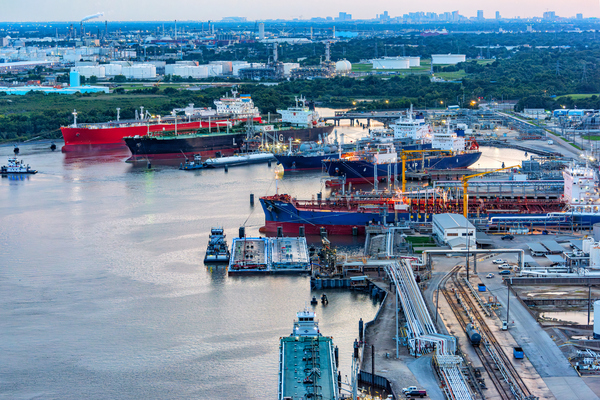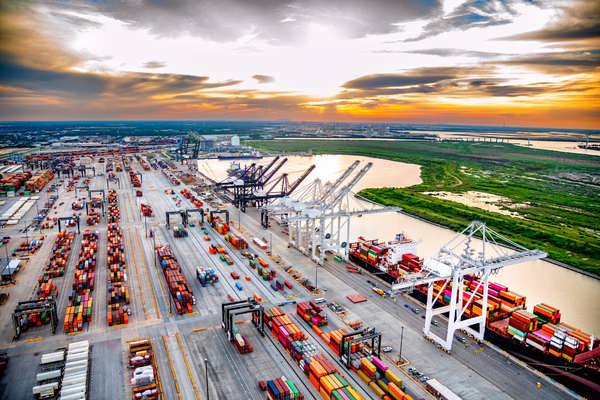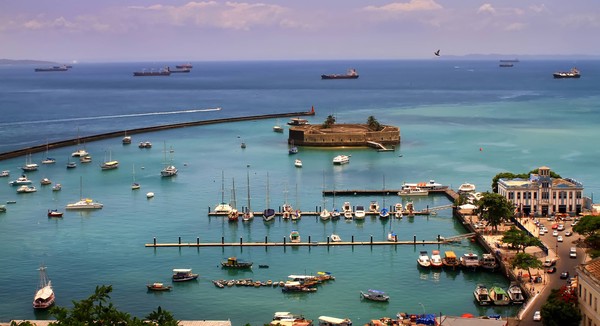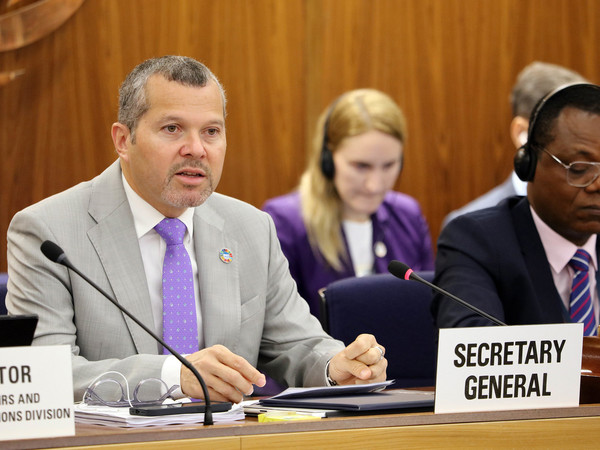The Week in Alt Fuels: Can MEPC 83 deliver without consensus?
The shipping industry has high expectations ahead of next week's IMO meeting. Without a consensus, can the regulator deliver the clarity the industry needs?
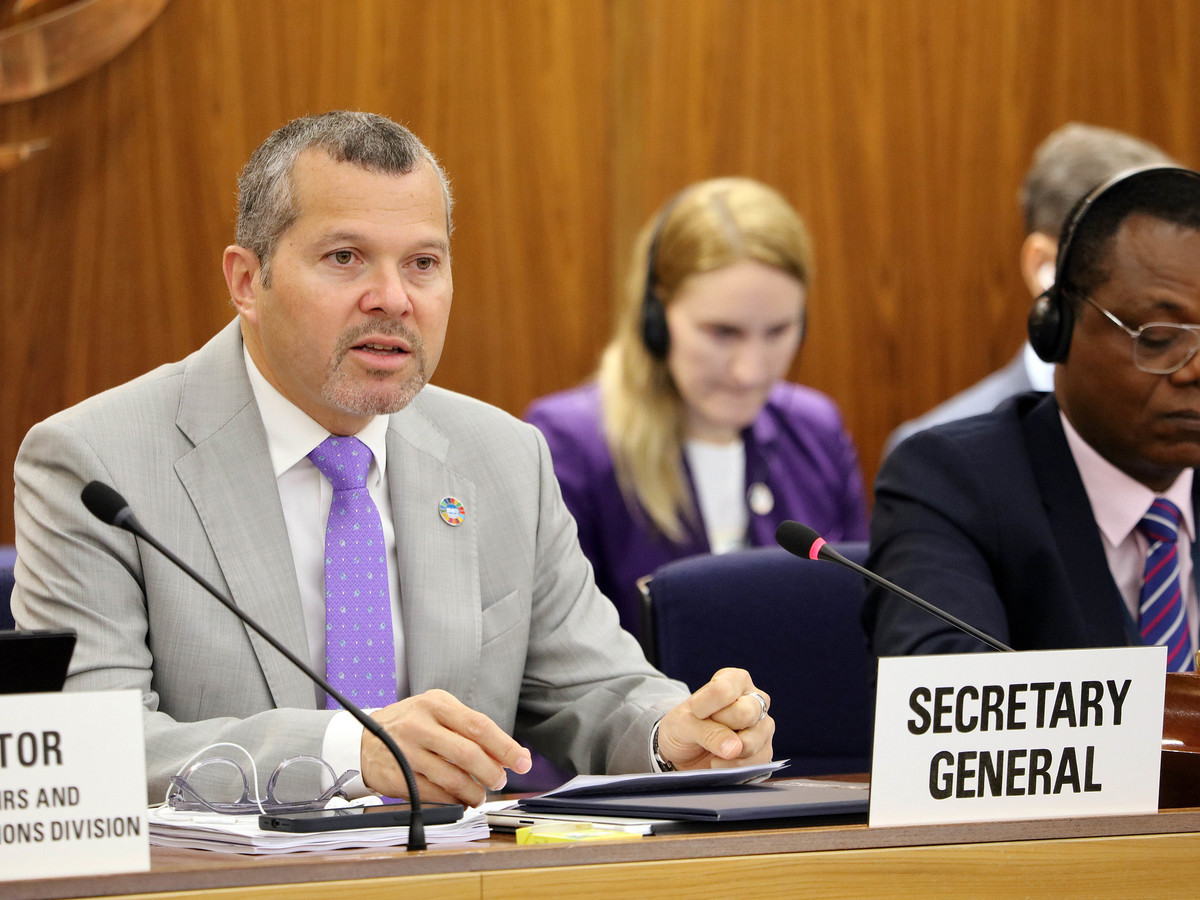 PHOTO: IMO Secretary-General Arsenio Dominguez at a Marine Environment Protection Committee meeting. IMO
PHOTO: IMO Secretary-General Arsenio Dominguez at a Marine Environment Protection Committee meeting. IMO
IMO Secretary-General Arsenio Dominguez insists that the organisation remains “on track” to approve technical and economic mid-term measures at the Marine Environment Protection Committee meeting (MEPC 83) next week, with formal adoption possible later this year at MEPC 84.
But promises mean little without agreement on how to turn them into binding policy.
The IMO must provide a framework that offers “some certainty to the sector and some support for the introduction of new green fuels," Johannah Christensen, chief executive of the Global Maritime Forum said.
Rajesh Unni, executive chairman of Synergy Marine Group, echoes this sentiment: “The key thing for the industry is to have clarity.”
In principle, most member states support the two proposed measures: a global fuel standard (GFS) and a universal greenhouse gas (GHG) levy. Dominguez remains confident MEPC 83 will deliver the clarity needed.
But with the clock ticking, it’s unclear what these negotiations will actually deliver.
No unity on fundamentals
Consensus remains elusive on several core elements of the proposed fuel standard, including emissions intensity limits, calculation methods, baseline year, treatment of upstream emissions, enforcement and revenue distribution.
Adding further complexity, the International Council on Clean Transportation has flagged gaps in lifecycle analysis guidelines that could undermine the fuel standard's credibility. Methane emissions from LNG are underestimated. Nitrous oxide emissions from ammonia engines are excluded.
Biofuels, which have become a lot more popular in the past year, lack accounting for indirect land use change, which may favour unsustainable feedstocks.
Maersk contends that the current fuel standard could “heavily” favour LNG. Opportunity Green believes it risks locking the industry into short-term fuel choices rather than genuine decarbonisation.
The price of carbon
On the economic front, the proposed universal GHG levy is proving just as divisive.
First, there’s a wide gap in proposed levy levels, ranging from a low of $18.75/mt, via $100/mt, to $150/mt of CO2-equivalent. Then there are other sticking points: feebates, flexibility mechanisms and how the revenue would be used. Together, they make this one of the most contentious parts of the puzzle.
And now, some countries are questioning whether a flat levy should even form part of the mid-term measures, says the Mærsk Mc-Kinney Møller Center for Zero Carbon Shipping. This uneasiness, Sinem Ogis of Siglar Carbon explains, stems from discomfort with the overlap between a levy and an economic element embedded in the fuel standard.
If consensus fails
A lack of consensus could compound concerns over overlapping policy designs and leave a levy behind entirely, with the IMO moving forward only with the fuel standard.
Such an outcome will delay real progress and introduce further confusion, warns Philippos Philis, chief executive of Lemissoler Group.
It could also slash the IMO’s revenue potential by up to 75% compared to even the lowest levy scenario and could exacerbate reliance on LNG and unsustainable biofuels – “leaving the sector with no option but to pay to pollute,” argues the UCL Energy Institute’s Shipping and Oceans Research Group.
Timeline matters
Even if the fuel standard advances, finer technical details must still be resolved by October to meet the IMO’s 2027 implementation goal.
Negotiations around financial mechanisms are going to be “tense” and some countries could push implementation of mid-term measures to 2028, beyond the IMO's preferred 2027 deadline, says Stamatis Fradelos, vice president of regulatory affairs at the American Shipping Bureau.
In other news this week, three non-profit organisations have called on the IMO to exclude biofuels from its global fuel standards and commit to “truly clean energy alternatives.” These non-profits contend that rising demand for biofuels can only be met by expanding farmland into forests and other natural ecosystems, or by cutting food production, which would ultimately drive prices up.
Twelve methanol-capable vessels were ordered in March, “bouncing back from a quiet winter” with zero vessel orders in February, DNV’s senior consultant Kristian Hammer said this week. There are now 55 methanol-capable vessels in operation and another 348 on order, with deliveries scheduled through 2030, according to DNV.
Spanish fuel distributor Forestal de Atlántico plans to build a 40,000 mt/year e-methanol production plant in Galicia, Spain. The fuel produced will primarily be supplied for bunkering, but also to other sectors, Forestal said. The plant is the “nearest stop for the ARA route from south in connection with the Houston route,” the company said.
By Konica Bhatt
Please get in touch with comments or additional info to news@engine.online

Contact our Experts
With 50+ traders in 12 offices around the world, our team is available 24/7 to support you in your energy procurement needs.

